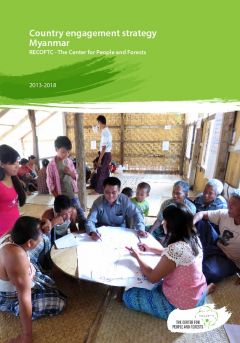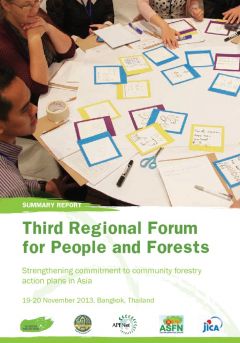ForInfo Factsheet: Capacity Building in Sustainable Forest Management
Wood energy is vital to the livelihoods of rural communities in the Mekong region, where over five times more fuelwood than timber is extracted for daily use. However, the energy needs of the community are commonly not factored into the establishment of market-oriented enterprises, which can lead to supply disruptions and subsequent impact on income as well as the environment. Hence, the importance of establishing sustainable community forest (CF) management, to ensure a stable provision of wood energy and to prevent gaps in supply and demand is significant.












